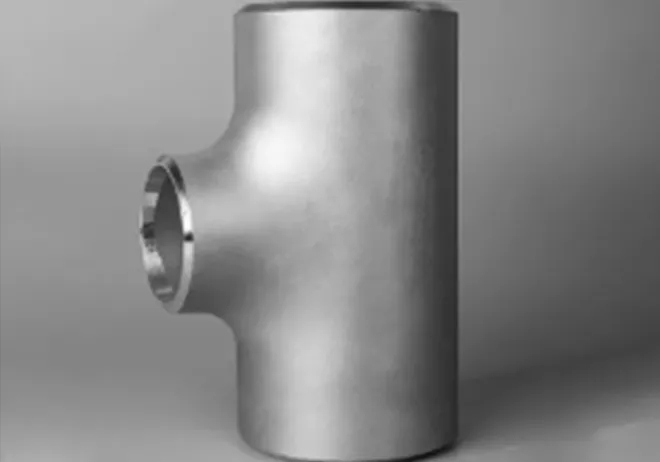-
Cangzhou Yulong Steel Co., Ltd.
-
Phone:
+86 13303177267 -
Email:
admin@ylsteelfittings.com
- English
- Arabic
- Italian
- Spanish
- Portuguese
- German
- kazakh
- Persian
- Greek
- French
- Russian
- Polish
- Thai
- Indonesian
- Vietnamese
- Zulu
- Korean
- Uzbek
- Hindi
- Serbian
- Malay
- Ukrainian
- Gujarati
- Haitian Creole
- hausa
- hawaiian
- Hebrew
- Miao
- Hungarian
- Icelandic
- igbo
- irish
- Japanese
- Javanese
- Kannada
- Khmer
- Rwandese
- Afrikaans
- Albanian
- Amharic
- Armenian
- Azerbaijani
- Basque
- Belarusian
- Bengali
- Bosnian
- Bulgarian
- Catalan
- Cebuano
- China
- China (Taiwan)
- Corsican
- Croatian
- Czech
- Danish
- Esperanto
- Estonian
- Finnish
- Frisian
- Galician
- Georgian
- Kurdish
- Kyrgyz
- Lao
- Latin
- Latvian
- Lithuanian
- Luxembourgish
- Macedonian
- Malgashi
- Malayalam
- Maltese
- Maori
- Marathi
- Mongolian
- Myanmar
- Nepali
- Norwegian
- Norwegian
- Occitan
- Pashto
- Dutch
- Punjabi
- Romanian
- Samoan
- Scottish Gaelic
- Sesotho
- Shona
- Sindhi
- Sinhala
- Slovak
- Slovenian
- Somali
- Sundanese
- Swahili
- Swedish
- Tagalog
- Tajik
- Tamil
- Tatar
- Telugu
- Turkish
- Turkmen
- Urdu
- Uighur
- Welsh
- Bantu
- Yiddish
- Yoruba

Dec . 01, 2024 15:07 Back to list
Different Types of Mild Steel Pipe Bends for Various Applications and Projects
Understanding Mild Steel Pipe Bends Applications and Benefits
Mild steel, commonly known as low carbon steel, is a prevalent material used in various industries due to its excellent properties and versatility. One of the key applications of mild steel is in the form of pipe bends, which are integral components in piping systems. These bends play a crucial role in redirecting the flow of fluids, ensuring that systems operate efficiently and effectively. In this article, we will delve into the significance of mild steel pipe bends, their applications, manufacturing processes, and the benefits they offer.
Applications of Mild Steel Pipe Bends
Mild steel pipe bends are used in a multitude of sectors, including construction, oil and gas, chemical processing, and water management. In construction, these bends are essential for creating intricate piping layouts that are required for heating, ventilation, and air conditioning (HVAC) systems. In the oil and gas industry, they are vital for transporting crude oil and natural gas from extraction sites to refineries.
In chemical processing, pipe bends help in managing the flow of various chemicals, ensuring that they are safely moved through the system without leaks or disruptions. Additionally, in water management systems, mild steel pipe bends facilitate the transportation of water across different terrains, crucial for municipal water supply and irrigation systems.
Manufacturing Process
The manufacturing of mild steel pipe bends involves several critical steps that ensure their durability and reliability. The process typically begins with the selection of high-quality mild steel, which is known for its malleability and ductility. The steel is then subjected to bending processes such as hot bending or cold bending, depending on the required specifications and application.
Hot Bending In this method, the steel pipe is heated to a high temperature, making it pliable enough to be shaped into bends without causing any structural damage. This technique is ideal for larger diameters and thicker walls, ensuring a smooth and consistent bend.
mild steel pipe bends

Cold Bending For smaller diameters and thinner walls, cold bending may be employed. This process involves applying force to the pipe at ambient temperatures, allowing for the creation of bends without the need for heating. Cold bending is efficient and maintains the integrity of the steel, although it may not be suitable for all applications.
Benefits of Mild Steel Pipe Bends
Mild steel pipe bends offer numerous advantages that make them a preferred choice for many applications. Firstly, their cost-effectiveness allows businesses to save on materials while still obtaining high-quality components. The malleability of mild steel ensures that it can be formed into various shapes, catering to specific project requirements.
Moreover, mild steel is highly resistant to wear and tear, making it a reliable choice for transporting fluids under various conditions. When properly coated or treated, mild steel pipes can also resist corrosion, thus extending their lifespan and reducing maintenance costs.
Additionally, the ease of welding and fabrication associated with mild steel facilitates quick installation and repairs, which is particularly beneficial in industries where downtime can result in significant financial losses.
Conclusion
Mild steel pipe bends are indispensable in a wide range of industries, providing essential functionality in transporting fluids and gases. Their versatile nature, combined with cost-effectiveness and durability, makes them an optimal choice for engineers and designers alike. As industries strive for efficiency and safety, the role of mild steel pipe bends in creating robust and reliable piping systems will continue to be paramount. Whether in construction, chemical processing, or water management, understanding the significance of these components can lead to better design and operational outcomes.
Latest news
-
ANSI 150P SS304 SO FLANGE
NewsFeb.14,2025
-
ASTM A333GR6 STEEL PIPE
NewsJan.20,2025
-
ANSI B16.5 WELDING NECK FLANGE
NewsJan.15,2026
-
ANSI B16.5 SLIP-ON FLANGE
NewsApr.19,2024
-
SABS 1123 FLANGE
NewsJan.15,2025
-
DIN86044 PLATE FLANGE
NewsApr.19,2024
-
DIN2527 BLIND FLANGE
NewsApr.12,2024
-
JIS B2311 Butt-Welding Fittings LR/SR 45°/90° /180°Seamless/Weld
NewsApr.23,2024











